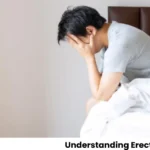As women transition through perimenopause and menopause, declining estrogen levels trigger a range of physiological changes — and one of the most overlooked symptoms is back pain. From lower back and hip pain in menopause to full-body stiffness, this discomfort is often a direct result of hormonal imbalances and musculoskeletal weakening.
The link between low estrogen and back pain lies in estrogen’s vital role in maintaining bone density, muscle mass, and joint health. Once these levels drop, the body becomes more susceptible to degenerative disc disease, joint inflammation, and even osteoporosis, all of which can contribute to persistent lower back pain and hot flashes during menopause.
Also Read: Physical Fitness During Menopause
Causes of Back Pain During Menopause
1. Hormonal Fluctuations
Estrogen supports the musculoskeletal system by strengthening bones, increasing collagen in joints, and reducing inflammation. With its decline, women may experience:
- Reduced bone mineral density (leading to osteopenia or osteoporosis)
- Increased joint stiffness and risk of osteoarthritis
- Muscle mass loss and longer recovery from strain
2. Postural and Structural Changes
Weight redistribution to the midsection during menopause puts more strain on the lower spine. Combined with decreased muscle support, this can result in back pain and menopause-related posture issues.
3. Inflammation and Lifestyle Triggers
A sedentary lifestyle, poor sleep, chronic stress, and dietary inflammation can all exacerbate perimenopause lower back pain. These factors also intensify symptoms of musculoskeletal syndrome of menopause (MSM) — a cluster of joint and muscle pains driven by hormonal changes.
Symptoms to Watch For
Women may experience a wide range of symptoms associated with back pain during menopause, such as:
- Persistent ache or stiffness from the neck to the tailbone
- Muscle spasms while standing or walking
- Sharp pain while bending or lifting
- Radiating discomfort into the hips, lower abdomen, or legs
- Extreme lower back pain that worsens with inactivity
If you also experience joint pain in other areas (like knees, hands, or shoulders), it’s a sign that your back pain may be hormonally driven.
How to Treat Menopause Back Pain: Proven Strategies
1. Exercise and Movement
Consistent low-impact exercise is one of the most effective treatments for back pain during perimenopause:
- Yoga and Pilates: Promote flexibility, posture, and spine support.
- Walking and swimming: Boost circulation and reduce stiffness without straining joints.
- Strength training: Especially beneficial for improving core strength, hip stability, and preventing menopausal bursitis in the lower back.
Pro Tip: A physical therapist can design a personalized program targeting your low back pain menopause symptoms while avoiding injury.
2. Hormonal Support and Medical Treatment
For women with severe discomfort, consider discussing the following with your doctor:
- Hormone Replacement Therapy (HRT) to stabilize estrogen levels and reduce inflammation
- NSAIDs for pain and swelling (only under medical supervision)
- Prescription muscle relaxants for acute muscle spasms
Holistic and Alternative Therapies
In addition to conventional treatments, many women find relief through complementary approaches:
- Acupuncture: Stimulates nerves and eases tension
- Chiropractic care: Realigns the spine to relieve nerve pressure
- Massage therapy: Reduces tightness and improves mobility
- Mindfulness and Meditation: Alleviate stress that can trigger or worsen pain
Managing mental health during menopause is essential. Anxiety and depression are common and can heighten pain sensitivity. Consider professional counseling or guided relaxation practices.
Diet and Nutritional Support
Bone-supporting nutrients become critical as menopause and back pain progress:
- Calcium: Found in dairy, fortified foods, and leafy greens
- Vitamin D: Essential for calcium absorption; sources include sunlight, eggs, and oily fish
- Magnesium: Supports muscle and nerve function
Maintaining a healthy weight is equally important. Excess belly fat puts strain on the spine and worsens lower back and hip pain in menopause.
Lifestyle Adjustments for Lasting Relief
- Correct posture: Avoid slouching to reduce spinal stress
- Quality sleep: Sleep on a supportive mattress and practice good sleep hygiene
- Quit smoking: Smoking reduces bone density and slows tissue repair
- Stay active: Even short walks and stretches throughout the day can minimize stiffness
When to Seek Medical Help
Consult a healthcare provider if:
- Pain persists for more than two weeks
- You experience numbness, weakness, or incontinence
- Pain interferes with sleep, mobility, or daily function
Ignoring perimenopause and back pain can worsen conditions like spinal stenosis or fractures, especially in women with osteoporosis.
FAQs
Conclusion
Menopause back pain is more than just a physical issue — it reflects the complex interplay of hormonal shifts, lifestyle factors, and emotional well-being. While the discomfort can be intense, it is manageable with the right strategies. By understanding how low estrogen impacts the spine, adopting a proactive approach through exercise, diet, and therapeutic support, and seeking medical guidance when needed, women can effectively minimize or even eliminate back pain during menopause. Remember, you’re not alone — and with the right care, this transition can be a healthier, more empowered phase of life.
Disclaimer: The content on Wellness Derive is for informational purposes only and not a substitute for professional medical advice, diagnosis, or treatment. Always consult a healthcare provider for medical concerns.



